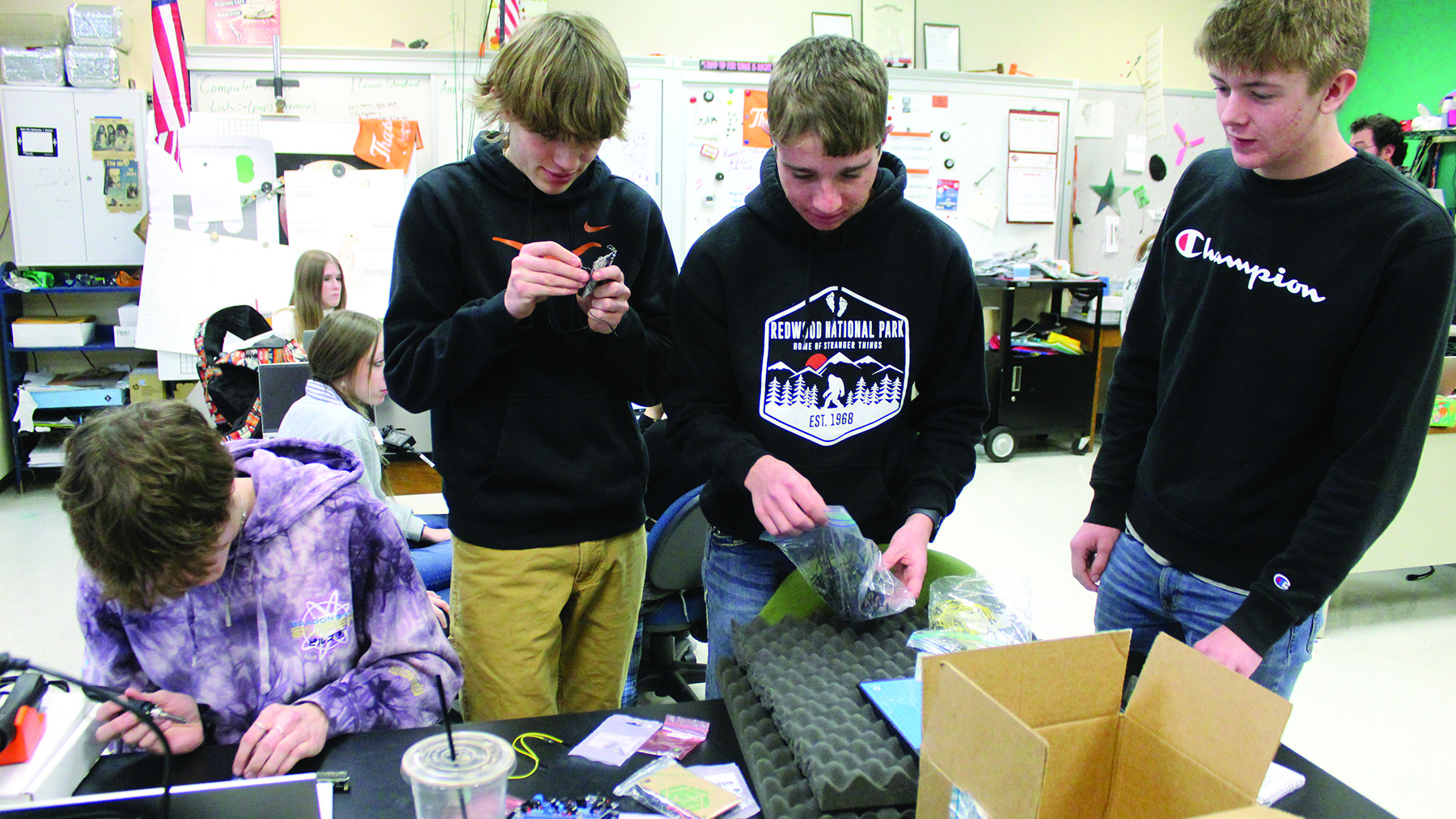Students prepare tech for eclipse

Photo by Walter Sprague/NLJ On Tuesday, Jan. 9, the high school science team works on the different technology to be used during the Eclipse Ballooning Project. The project will monitor different aspects of the effects of the total solar eclipse of April 8, which takes place near Dallas, Texas.
A team of students from Newcastle High School — senior Marshall Merchen, and juniors Elijah Morrill, Thatcher Troftgruben, and Caleb Hoover — are preparing to send some monitors attached to a balloon tens of thousands of feet into the atmosphere.
This project, connected with the National Aeronautics and Space Administration, is supervised by science teachers Doug Scribner and Nicholas Peterson. The National Eclipse Ballooning Project is what these kids are working on.
This nationwide project involves sending a balloon, attached with payloads, into the atmosphere to read data during the total lunar eclipse on April 8. The data the team will be collecting includes radiation, time of flight, atmospheric pressure and, most importantly, bit-flipping.
Bit-flipping is an anomaly that happens when code is printed incorrectly and errors arise in the computing process. Bit-flipping usually occurs during equipment mal-function and/or overheating. The Newcastle team will focus on how increased amounts of radiation in the upper atmosphere can increase the chances of bit-flipping and, thus, computer code.
The project started as just a normal STEM class assignment but transitioned into a project working with colleges and meeting with NASA representatives. Coding just a simple sensor with an Arduino in a class for an assignment, to getting to work with college professors and recognized physicists to even interviews to be on a NASA documentary has become an adventurous trip for average students at NHS.
The project started in June 2023, with workshops to build the payload at South Dakota School of Mines and Technology. As the build progressed, students participated in test launches from Spearfish, Deadwood, Custer and Rapid City, South Dakota, to ensure that the project would be sufficient for the main “test launch” in Farmington, New Mexico.
The purpose of the initial work was to launch a balloon during the annular coronal eclipse on Oct. 14, 2023. The launch, performed near Shiprock, New Mexico, was their first main test launch to prove that everything would work for the total eclipse on April 8. The launching process was close to flawless; it was a windless day and the balloon seemed to go straight up into the air. On descent, the balloon popped, causing it to free-fall for a while longer than wanted, until the parachute caught too much wind. That caused the payloads to spin and apply pressure and stress to tethers connecting the boxes. After spinning, they became loose and detached one by one, resulting in the bottom two boxes detaching mid-air. Sadly, NHS could not locate the boxes, despite their desperate searches in the New Mexican desert.
The team’s main launch will be on April 8, on which is going to be a total eclipse. The members of NHS were devastated — they had spent a lot of time and effort to make this box — and all of that was lost somewhere amongst New Mexican tribal land. Then they also had to prepare for a long 14-hour car ride home.
The April 8 launch is going to be in Plano, Texas (just north of Dallas). Preparing for the next launch, NHS students are getting excited the closer the date is arriving. The team had to rebuild the project from the ground up and it feels that the adjustments they made have better prepared them for the launch. Especially in the tethering, they have changed materials to paracord, as well as changed the tethering orientation in order to reduce stress on the connection points onto the paracord.
Overall, the team feels much better prepared, with its members looking forward to the data they collect.







